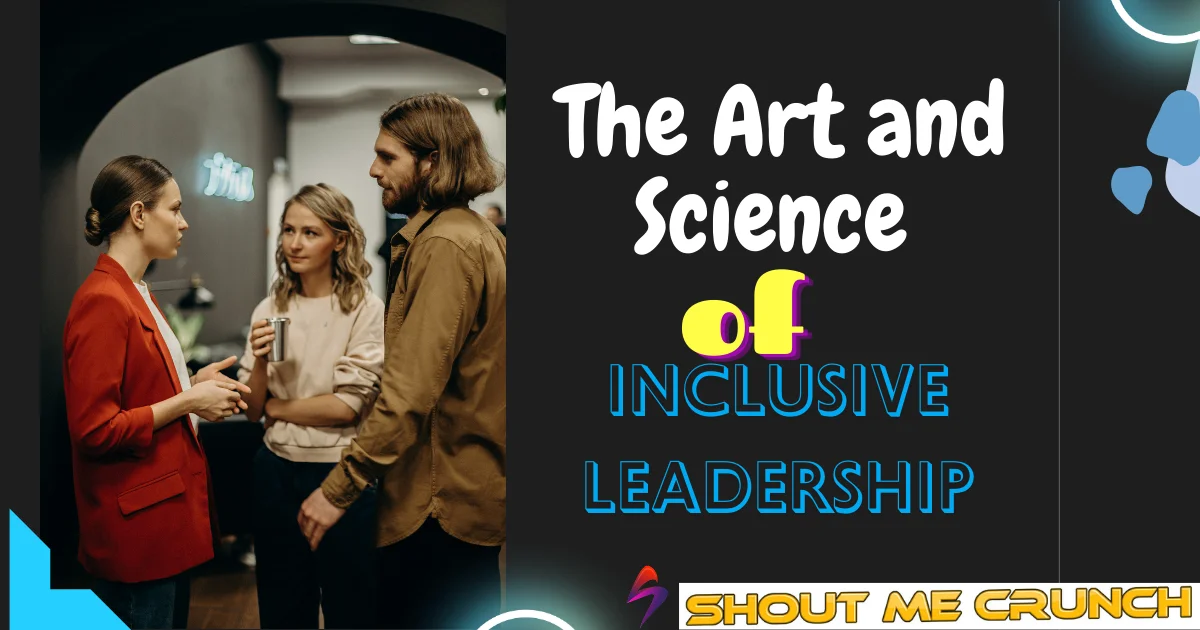Leadership is a complicated and nuanced notion that necessitates inclusivity and balance. Training in inclusive leadership can assist leaders in navigating the complex trade-offs between meeting individual needs and furthering the group objectives. This article investigates several facets of leadership, such as the distinctions between leadership and management, the roles of leaders, and the synergy of numerous factors. The purpose is to demonstrate the complexities of good leadership and its problems.
Is there training available for inclusive leadership?
The takeaway from this is that the job of a leader is actually never to please people. The leadership task is made of more serious stuff involving often what is required for the general good of individuals, groups, and the organization. This is mostly a complex endeavor involving judgment, reason, and wisdom, combined with deep care about fulfilling potential and destiny.
Inclusive leadership training must, therefore, take a hard look at how to be a leader for everyone—not only in isolation as individuals but also as a collective of interlocking interests and dependencies. Leaders must focus on understanding and optimization continually. This is beyond the confines of the internal organization as it extends to managing boundaries with the external environment in a highly anticipatory manner.
Are Leadership and Management the Same?
One of the hardest things about studying good leadership is telling the difference between leadership and management. Like a conductor leading an orchestra, leadership means getting people to work together toward a shared goal. Management, on the other hand, means keeping an eye on the little things, like making sure artists play their notes correctly.

Both are necessary for the organization’s success but serve different purposes. Leaders establish the culture, encouraging creativity and motivation, while managers maintain the structure, ensuring the rules are obeyed and the goals are reached. It’s not about one being more significant than the other but about recognizing the particular value each brings to the seamless operation of a group. As a result, let us explore the interaction between leadership and management and enjoy the synergy they create in the workplace.
What is on the leadership agenda?
Inclusive leadership can never be about maintaining the status quo. To be effective, continual stretching of individuals and groups is required to make sense of the past and meet present and future challenges. Adjusting and aligning thinking, feeling, and behavior is integral to what is ongoing in a dynamic environment.
When one considers the work of a leader in an organizational culture that seeks to be inclusive, one of the more important characteristics of the leader is to be adaptable and flexible; again, not simply for the sake of pleasing, but more importantly for the sake of being responsive. Often adjustments are required to best deal with specific individuals, groups, and organizational needs in diverse situations.
If we look at the question, “what is inclusive leadership”, we soon encounter the fact that it must be about being a catalyst for evolution and imparting empowerment whilst concurrently building fellowships. How the inclusive leader actually achieves this, for everyone and with everyone, will be very different almost every time.
When Does Leadership Become Important?
Leadership is a dynamic force that adjusts to the rhythms of organizational life rather than a fixed duty. It becomes crucial when a group faces a problematic or changing situation requiring guidance and motivation.

Leadership is analogous to a conductor stepping forward to direct the ensemble through the musical journey, from the routine melody to the transforming symphony. It is not a steady presence but a responsive dance to the various beats of chances and challenges. In short, leadership is critical when a group’s efforts must be coordinated and at their peak in the face of uncertainty, innovation, and transformation.
What’s the next step?
Inclusive leadership is essential to personal and professional development since it promotes self-awareness, acceptance, and belief. It encourages leaders to take the initiative and reduces reliance on them. Inclusive leaders promote a sense of shared accountability and creativity, fostering innovation and expanded possibilities.
They also want to see more people from varied backgrounds take on senior leadership positions, displaying commitment and integrity to diversity, equality, and inclusion. This validation of leadership inherent in variety will aid in making visions a reality, helping everyone to rise to greatness. The higher the effect and returns for those involved, the more inclusive leadership accelerates the realization of varied potential.

Visionary Leadership:
This involves building a culture of creativity and innovation in which leaders serve as mentors, inspiring and guiding people to reach a common goal.
Inclusive Impact
This refers to maximizing the diverse potential of people from various backgrounds, viewpoints, and experiences to generate positive outcomes and value for the organization and society.
Diversity Championing
This refers to actively supporting and advancing the representation of various groups in senior leadership roles to promote a more equal and inclusive environment.
Leadership Evolution
This is about shifting from a traditional model of leadership in which followers rely on leaders to a more collaborative and distributed one in which everyone bears responsibility and is accountable for their actions and results.
Empowerment Foundations
This is about building personal leadership abilities based on self-awareness, acceptance, and belief, which allow people to advocate for themselves and others.
What Leadership Skills Would You Like to Improve?
When describing leadership, one of the essential options that authors must make is whether to capitalize the word “leaders” or not. This is an issue of style and tone as much as grammar. Capitalizing “leaders” conveys importance and authority, but adopting lowercase means a more informal and pleasant attitude. It’s similar to selecting the appropriate loudness and pitch for a musical piece.

What attributes distinguish a leader, with or without a capital letter? Here are a few examples of vital skills:
– Empathy
The ability to comprehend and relate to the emotions and viewpoints of others. Empathy fosters team trust and rapport, creating a happy and supportive atmosphere.
– Communication
Leaders understand how to craft clear, convincing, and engaging communications. They can express their vision, strategy, and beliefs to motivate others to follow and act.
– Adaptability
Leaders are adaptable and resilient in the face of change and uncertainty. They view obstacles as opportunities for learning and innovation, and they can change their plans and activities.
– Vision
Leaders have a compelling idea of the future they want to create. They may connect their concept to their team’s goals and inspire others to keep working towards them. They accomplish this by communicating their vision in an appealing way to their team.
– Collaboration
Leaders foster a culture of collaboration and teamwork in which varied talents and strengths are appreciated and utilized. Collaboration is more than just working together; it is also about attaining excellence.
Conclusion
This paragraph summarizes the main topics of the inclusive leadership essay, from training approaches to outcomes for individuals and society. It emphasizes fundamental leadership abilities and values such as adaptation, cooperation, and vision.
Furthermore, it demonstrates the significance of inclusion as a principle and a goal for leaders who must motivate. It also assists others in reaching their maximum potential. There is a call at the end of the line for leaders to take this approach. The metaphor of a symphony is used to show how harmony and diversity work together in inclusive leadership.


